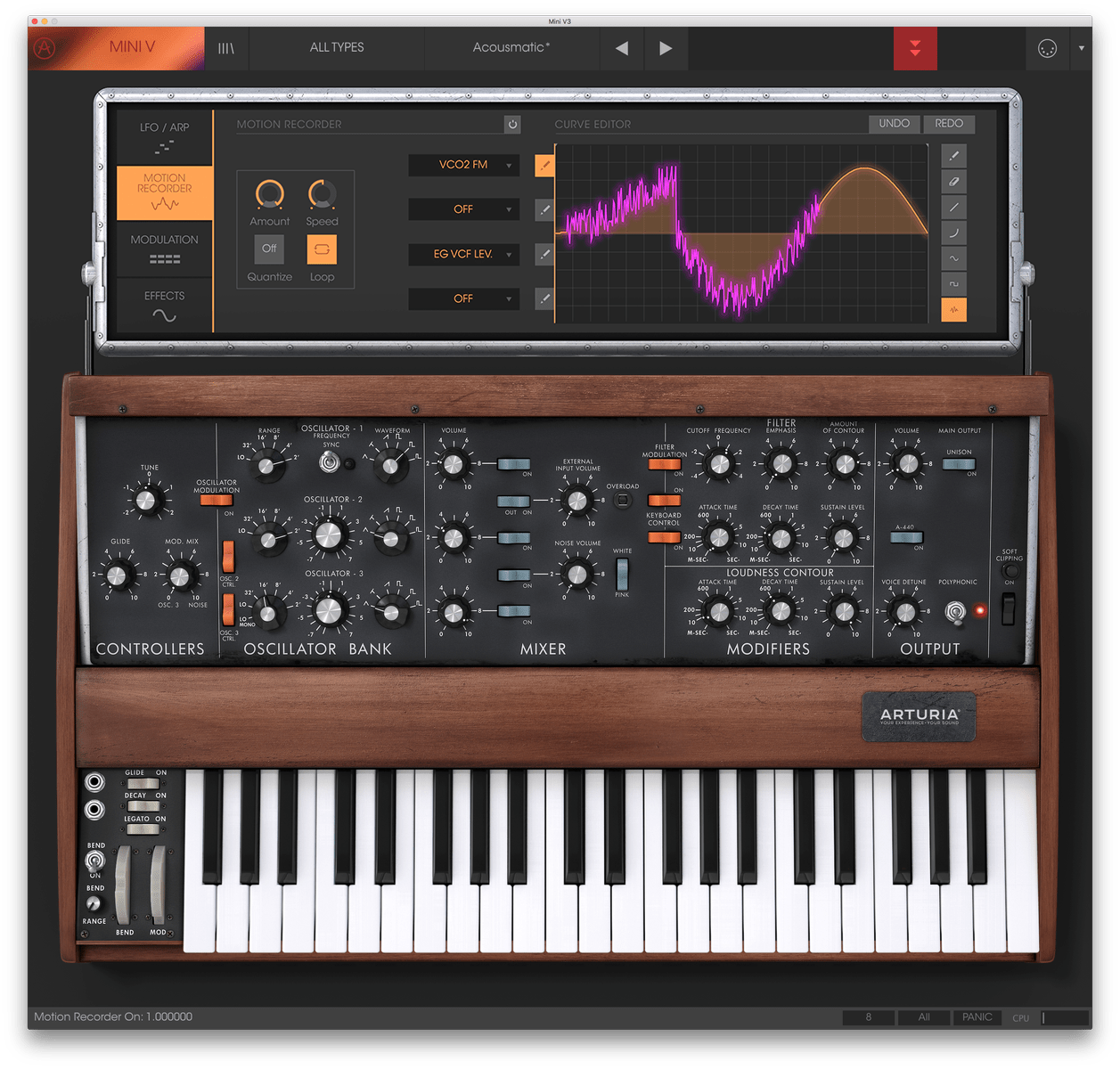
If you want the normal, unruly MS-20, you can set the preamp to Dirty (boosting signal and saturating filter output), and leave Limit Res. Hidden in tiny type way at the bottom of the UI are two important options.

Don’t miss these options tucked on the bottom of the UI. The knob is a macro for both HP and LP cutoff, but there’s also a little dot that indicates where it is in practice, so you get some visual feedback to back up your ears.

They’ve done something clever with that MASTER CUTOFF control, too. (The STEREO control means stereo offset, by shifting frequencies in opposite directions.) The MS-20 filter plug-in is actually two MS-20 filters – high-pass and low-pass, both resonant, and both stereo, routed in series. Note all the subtle visual feedback, layered atop the skeuomorphic controls. You start with an authentic-sounding model at the core, but add a bunch of extras. Let’s walk through this, because Arturia has done what they’ve done with the rest of their latest generation of software. And it definitely feels like a hundred dollar plug-in, not a giveaway, so go grab it for sure. The plug-in is a free gift now through January 2nd, then 99$/EUR thereafter. But having this to pop into software signal chains? Brilliant. The MS-20 hardware itself is already known for this, as the instrument is just as popular for modulating and filtering external filters as it is as a synth. Having this in plug-in form – apart from being a no-brainer because it’s free – means some new creative possibilities outside of the synth. I’m immensely fond of the MS-20 itself, and there’s just something about the physical feel of its pots and patch cords, so getting hands on one of KORG’s very accurate remakes or a beat-up original is great if you can find access to one. And then you can crank it up to screaming distortions and brutal self-oscillation.

Even when applied more subtly, it’s full of character – a filter sweep in either direction just sounds different on the KORG circuit than on others. The MS-20 filter is a beautiful design, precisely because what it’s not is tame or well-behaved. And for a limited time, it’s free, so let’s grab it and have a look and how to get going. Arturia has now made their model of it available as an independent plug-in, packed with extras, so you can use it anywhere. Prerequisites: Install MIDI Control Center, and test to make sure that the computer detects the Beatstep Pro in the software.The KORG MS-20 has long been the cure for the common filter. You can read this guide in Google Drive by Arturia, or you can read the steps below on how to use the Beatstep Pro to sequencer the Korg-MS20. Korg MS-20 mini (and most of the older Korg hardware with CV uses Hz/V and S-Trig. In one of my other articles, I talked about how CV can be in 1V/O (1 Volt per Octave) and Hz/V (Hertz per Volt).


 0 kommentar(er)
0 kommentar(er)
